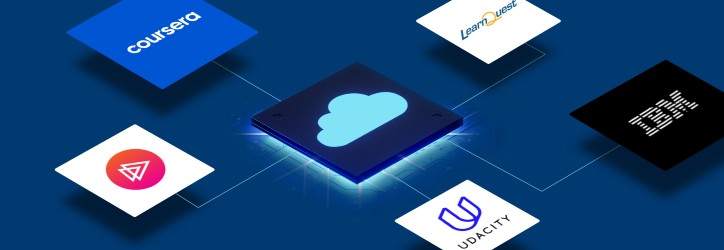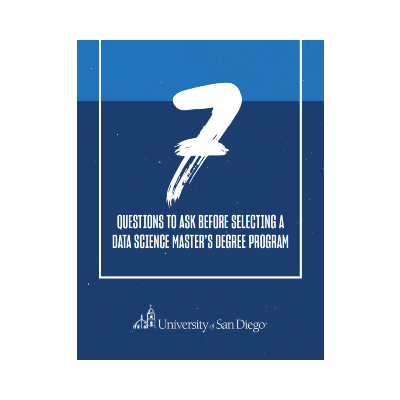While the concept of virtualization is as old as the internet itself, cloud computing as a service only took off in the early 2000s with the launch of Amazon’s cloud computing infrastructure followed by Amazon Web Services (AWS). Over the past 20 years, more and more companies have committed to migrating their infrastructure, platforms and software to cloud services.
While that migration was well underway prior to the COVID-19 pandemic, the paradigm-shift brought about by the subsequent lockdown has only served to accelerate it. A 2021 O’Reilly survey on cloud adoption found that 90% of respondents used cloud computing, an increase over the previous year’s 88%. Moreover, almost half (47%) reported that they were pursuing a “cloud first” strategy, rather than utilizing it as a backup.
With cloud computing fast becoming the default IT operation, if you’re interested in working with technology, then cloud computing is going to affect you, one way or another. So, let’s take a look at the essentials of cloud computing, some of the best cloud computing online courses for learning the basics and how you can build up your cloud computing bonafides.
Why Is Cloud Computing Knowledge an Essential Skill?
Cloud computing continues to gain traction as the preferred means of IT services. Gartner predicts that spending on public cloud computing services will grow 20.4% from $561 billion in 2023 to $675.4 billion in 2024.
This steady level of growth is for all areas of cloud services, including:
- Infrastructure as a service (IaaS) — This cloud service provides access to IT infrastructure, such as servers and virtual machines (VMs), as well as data storage and operating systems. Gartner forecasts a 25.6% growth rate for IaaS from 2023 to 2024.
- Platform as a Service (PaaS) — A cloud service that offers an on-demand environment that can be utilized for developing, testing and delivering software applications. There is a predicted 20.6% growth for PaaS in 2024.
- Software as a service (SaaS) — Perhaps the most common and well-known form of cloud services, these are licenses for software applications, which include regular updates, upgrades, security patching and other ongoing maintenance. Being a more established service, there’s a projected growth of 20% for SaaS in 2024.
The reason for this continued growth? Whether it’s entirely located off-site, or as a hybrid system that’s partially onsite, cloud systems provide several benefits over older, entirely “on-premises” system that organization of all sizes can benefit from:
- Reduced costs: Hosting your own on-premise hardware requires the purchase and maintenance of servers, networks and storage. That’s in addition to developing, installing and updating the required operating system and other software. Although cloud services are licensed and come with a subscription fee, all in all it often amounts to lower rates than what it costs to support traditional on-premise hosting.
- Greater scalability: Arguably the greatest asset of cloud systems is their scalability. Expanding or adding on to an older, on-premise system would require purchasing new hardware, replacing and upgrading technology and finding the physical space to store it all. Expansion through cloud services can happen rapidly, with little-to-no downtime or interruption in service to the end-user.
- More flexibility and better utilization: With a cloud subscription, an organization only has to pay for the amount of space and services that it needs. There’s no risk of having unused space and idle services using up CPU power or memory, or wasting electricity. There’s also no hassle of having to operate during prescribed hours of operation, as a cloud service can be accessed when and where it’s needed best.
- Increased productivity: Managing on-site data centers and updating proprietary software requires an internal IT team to manage operations such as hardware setup and software patching. These chores can eat up valuable time, whereas shifting those responsibilities to a cloud service provider can allow an IT team to focus on larger, more important business goals.
- Improved security: Even on-premise systems are subject to security breaches, and updating software to remove vulnerabilities requires constant testing and patching. Cloud providers constantly monitor their services to discover and immediately react to any breaches or data loss. They also frequently update software and security measures as part of their efforts to protect data, infrastructure and users.
Top 5 Online Cloud Computing Courses for Beginners
Whether you’re hoping for a better understanding of how cloud computing works from a business perspective, you’re looking to get into writing code for cloud platforms, or you’re exploring ways that your enterprise can leverage cloud services, it’s a critical advantage to at least familiarize yourself with cloud computing. Here are some of the best cloud computing courses for beginners.
Course length — 1 hour and 35 minutes
Cost — Available via free trial or $29 a month subscription.
This single course provides a helpful overview of cloud principles, networking concepts, storage concepts and cloud design. This is an ideal beginning-level course for those who need to learn the fundamentals of cloud computing. No prior experience is required, but Pluralsight does recommend some basic IT proficiency.
If you’re interested in a surface-level introduction to cloud computing, this is a quick and inexpensive way to start.
Course length — 23 hours over five weeks.
Cost — Students can audit for free, but earning a certification requires a Coursera subscription.
The first of a six-part Cloud Computing Specialization, this course goes a little deeper in teaching fundamental cloud computing concepts such as distributed algorithms and design concepts. While it’s considered a beginner-level course, there are some programming assignments that require experience with the C++ programming language. It is a self-paced course that includes quizzes and graded assignments with peer feedback.
Consider this course if you’re familiar with the basics of cloud computing but want to dig deeper into how the systems work while trying your hand at programming.
Course length — 13 hours over four weeks.
Cost — Students can audit for free, but earning a certification requires a Coursera subscription.
Offered by the IBM Skills Network, this course provides foundational knowledge required for understanding cloud computing from more of a business perspective. It covers core principles and reviews applicable real-world cases. The course also reviews different cloud service types, deployment models and emerging trends. Though it doesn’t require prior programming experience, students will create an IBM Cloud account in order to set up a cloud object storage service to host a static webpage.
This course is helpful if you’re interested in learning more about business use cases and want to try your hand at working with cloud service systems without needing programming skills. This course also applies to several Coursera certificate programs, including Key Technologies for Business Specialization and Information Technology and Cloud Fundamentals Specialization.
Course length — Nine hours over three weeks.
Cost — Students can audit for free, but earning a certification requires a Coursera subscription.
This is a high-level beginner’s course that explores the concepts behind cloud computing, including managed infrastructure and cloud economics. Lessons include quizzes as well as discussion of best practices and use-cases. Though the course reviews different cloud service platforms, there is a focus on Azure services and APIs.
Designed for beginners, this course offers a more comprehensive look than other surface-level courses.
Course length — Two months of course work at an average of 10 hours per week.
Cost — $249 a month or $846 for 4 months.
For those looking for a start in developing and building cloud services, this course offers an introductory experience in working within the AWS ecosystem. If you’re a programmer with some experience in web development, cloud development, or hosting and web applications, then this “nanodegree” can establish you as a certified AWS Cloud Architect.
This is a full programming course that requires prior experience with web development, object-oriented programming, Linux command line basics and a basic understanding of AWS.
How to Evaluate the Best Cloud Computing Course for Your Needs
These selected courses are only a handful of available cloud computing courses. There are others that go more in-depth on programming, some that provide a deep-dive on particular web services and a few that are part of a larger computer science or IT degree. In order to decide whether any of the courses are a wise investment, consider the goals of each course and ask yourself the following questions about your experience and career aspirations:
- How might cloud computing relate to your future career or business ventures?
- What do you need to know about cloud computing?
- Would a beginner- or intermediate-level course best fit your needs?
- Do you have prior programming experience? If so, in which language?
- Are you looking for information, or do you need a certification or degree?
- Which cloud service are you looking to learn more about?
- What are the required hours, scheduling and financial commitments?
Online Cloud Computing Course Overview:
| Cloud Computing: The Big Picture | Cloud Computing Concepts, Part 1 | Introduction to Cloud Computing | Cloud Computing Basics | AWS Cloud Architect Nanodegree | |
| Cost | Free Trial / $29 per month | Free Audit / Certificate available for $2,000 subscription | Free Audit / Certificate available for $2,000 subscription | Free Audit / Certificate available for $2,000 subscription | $399 per month / $1,017 for 3 months |
| Duration | 1.7 hours | 23 hours | 13 hours | 9 hours | 3 months |
| Pre-requisites | None, beginner | Experience with C++ | None, beginner | None, beginner | Experience with Cloud Computing, Programming, and AWS |
| Schedule | Flexible | Flexible | Flexible | Flexible | Flexible |
| Part of a series | No | Yes | Yes | No | No |
| Platform | Pluralsight | Coursera | Coursera | Coursera | Udacity |
You’ll also want to consider online degree programs that include cloud computing as part of their curriculum. USD’s online Master of Science in Applied Data Science (MS-ADS) is designed to equip graduates with the technical knowledge, skills and strategies needed to apply powerful and modern analytical tools to real-world applications.
Cloud computing is an integral part of data science since it allows for ample data storage, the ability to share and sort through data easily and enhanced security and protection.
USD even dedicates an entire course to the topic: Data Science with Cloud Computing covers the fundamental concepts of cloud computing as it impacts the field of data science. Topics include cloud economics, distributed storage, SageMaker ecosystem and much more.
If you’re looking for more information on how to choose the right online master’s degree program, download USD’s free resource, Choosing an Online Master’s Degree: The Ultimate Evaluation Guide. You’ll receive a 10-page PDF, comparison worksheet and an extensive list of questions to ask to ensure you find the right program for your career goals.




